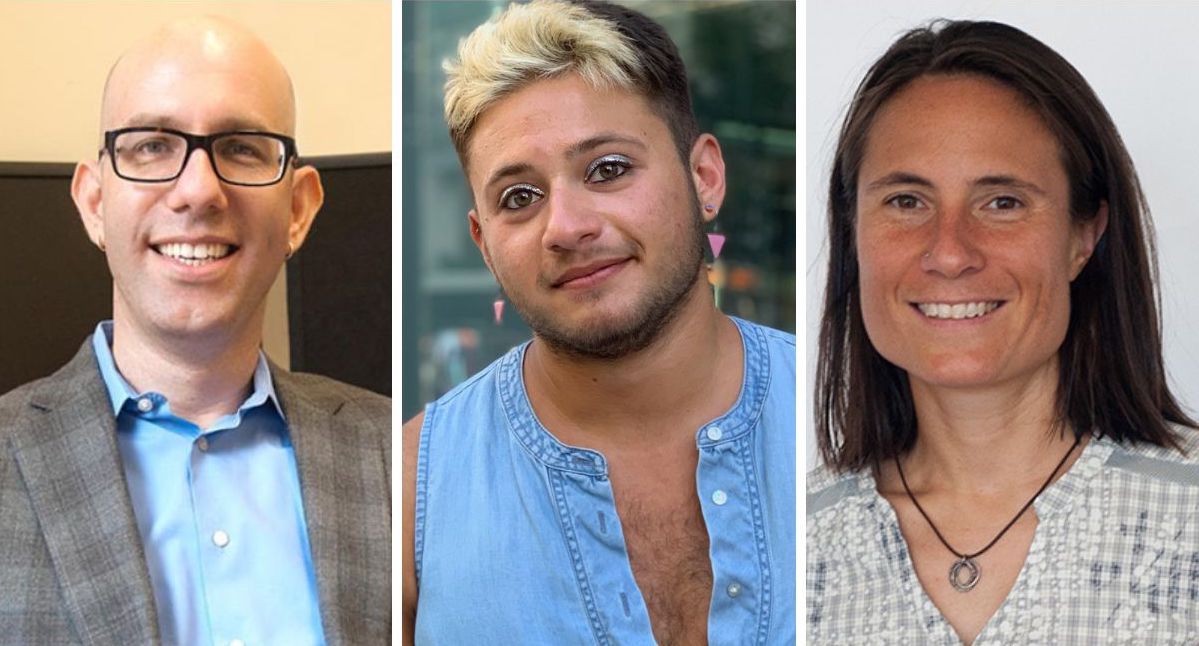At least 20 states have introduced their versions of a “Don’t Say Gay” bill, limiting the discussion of gender and sexual orientation in classrooms, with Flordia and Alabama signing bills into law earlier this year. A national version of these laws now looms in Congress, and trans students face additional limits related to athletics in more than fifteen states.
But as LGBTQ+ students and schools remain trapped in the crosshairs of political battles across the country, educators — whether able to stand up against policy or empowered by a more inclusive climate — can make a meaningful difference in supporting students and preventing bias. Here’s how:
Create space for sharing pronouns.
This allows individuals to “self-identify instead of assuming someone’s identity based on their appearance”, explains TC’s Oren Pizmony-Levy, who as the Principal Investigator at the College’s Global Observatory and Advocacy on LGBTQ+ Education leads efforts to research and assemble LGBTQ+ school climate indicators and educational initiatives.
“The more we normalize sharing pronouns, the more it will help people ‘come out’ with their preferred identity and pronouns, and push the conversation forward,” explains Pizmoney-Levy, Associate Professor of International and Comparative Education. “It’s not only the queer kids. When [cisgender people] share their pronouns, it helps individuals realize that everyone has a gender identity.”
But rather than forcing the sharing of pronouns, TC’s Sandra Schmidt advises “inviting it, allowing students to indicate how they want to be referred to, and being flexible across the year” as pronouns may change.
Since many young people are more open-minded about identity, Schmidt notes, educators can facilitate conversations about how schools have “normalized” the gender binary and traditional gender norms — an area the Associate Professor of Social Studies Education explores in her own research.
For TC alum Dylan Kapit (M.A. ’20, Developmental Disabilities), who has spent their career executing on-the ground inclusion work, “pronouns are the most basic form of trans allyship. But they are not always the thing that is most important or necessary for trans students, and so we absolutely cannot stop there,” says Kapit (they/them). “LGBTQ+ students need to feel safe and validated and affirmed and celebrated, and that takes so much more than just asking for pronouns and then respecting them.”
Embrace a diverse, intersectional curriculum to include LGBTQ+ experiences.
This helps foster inclusive representation that can support all students. “We don’t know who the LGBTQ+ kids are,” explains Schmidt, noting that while some kids are aware of their gender and sexual identity at a younger age, many come out during or after high school. But lessons — whether in history, literature or other subjects — that include references to queer (or diverse) gender identities and sexualities can help students cope throughout development.
“LGBTQ+ youth are not necessarily raised in queer-identified homes,” says Schmidt. “So for young people figuring out their identities, how their peers and schools reflect them in that process is very important.”
This principle is further cemented by Pizmony-Levy’s research, which has examined the experiences of LGBTQ+ youth in numerous nations across the globe like Ireland and Israel.
“Our research shows that students who see themselves in the curriculum are more likely to feel that they belong to the school community and that belonging keeps them in school. They’re not missing lessons and they feel more engaged,” Pizmony-Levy explains, noting that this approach to learning also helps reduce bullying. “When we send a message of inclusion to all students, other students are going to treat LGBTQ students better as well.”

Oren Pizmony-Levy, Associate Professor of International and Comparative Education; Dylan Kapit (MA ’20); and Sandra Schmidt, Associate Professor of Social Studies Education. (Photos: TC Archives)
Throughout their years teaching, Kapit has applied this research on the ground. “In addition to creating the space for students to share their pronouns and other relevant parts of their identities, and also working to create a safer classroom environment for all my students so that they feel included, I actually teach about LGBTQ+ identities and issues,” says Kapit, who is now pursuing a doctorate in Special Education at the University of Pittsburgh. “I use real words to describe identities, read books with LGBTQ+ characters, teach about LGBTQ+ history and current events, and try my best to be honest with students about LGBTQ+ issues and realities.”
Kapit has indeed received “negative feedback” to this approach from parents and administrators who believe “elementary-aged students are too young to understand or even be exposed to LGBTQ+ identities and issues.” But for Kapit, exposing objectors to the research that illuminates the benefits of this discourse is essential.
During Kapit’s own experiences as a student, teachers “not shying away from talking about LGBTQ+ issues also makes [them] feel included, validated, affirmed, and celebrated.”
Rock pride in your safe space.
A visual culture can help foster a critical sense of belonging, both TC researchers agree. “Educators need to find ways to signal to every student that they are an ally on this and other issues, like Black Lives Matter,” says Pizmony-Levy, who refers to this kind of visual language as ‘micro-signals.’ “We found that kids who know they have many supportive teachers and school staff have better educational experiences, and are more motivated to learn.”
However, educators must take care to have a true foundation of inclusivity. “It’s very easy to hang up a poster. But it's much harder to have the language and actions to back it up,” says Schmidt, who notes that school policies like “Don’t Say Gay” often limit the extent to which this culture can exist — preventing the presence of books on gender and sexuality, and even limiting whether teachers can be open about their personal lives.
Get involved.
Fostering equity and inclusion beyond your own classroom is also essential to affect meaningful change. “Everyone is in a different space, and for those who feel comfortable, being willing to stand up and educate those around them can make a significant difference,” says Schmidt. “How you act beyond your classroom is important. Most people want to be supportive of their students and they just need a little help educating around that.”
Policies related to books on LGBTQ+ issues in school libraries; uniform and bathroom requirements; and whether students are specifically protected from harassment based on sexual orientation, gender expression and race all play a role in the overall climate of an institution, Pizmony-Levy says.
By playing a more active role in the community, “you’re not just improving the climate within your classroom,” Schmidt says. “You’re helping to affect the entire school.”
Listen to youth.
Being responsive to what students say they need is also critical for progress, Schmidt and Pizmony-Levy agree. “The best source for how schools can do better is the students,” explains Pizmony-Levy, whose research regularly surveys LGBTQ+ youth. “We‘ve found that LGBTQ+ youth are actively working to improve their school climate, whether talking with friends about ways to reduce LGBTQ+ phobic comments or by bringing LGTBQ+ topics and experiences into class,” Pizmony-Levy says. “Students have a lot of say and a lot of ideas and opinions, and we can center our improvement of practices and policies by listening to them.”
